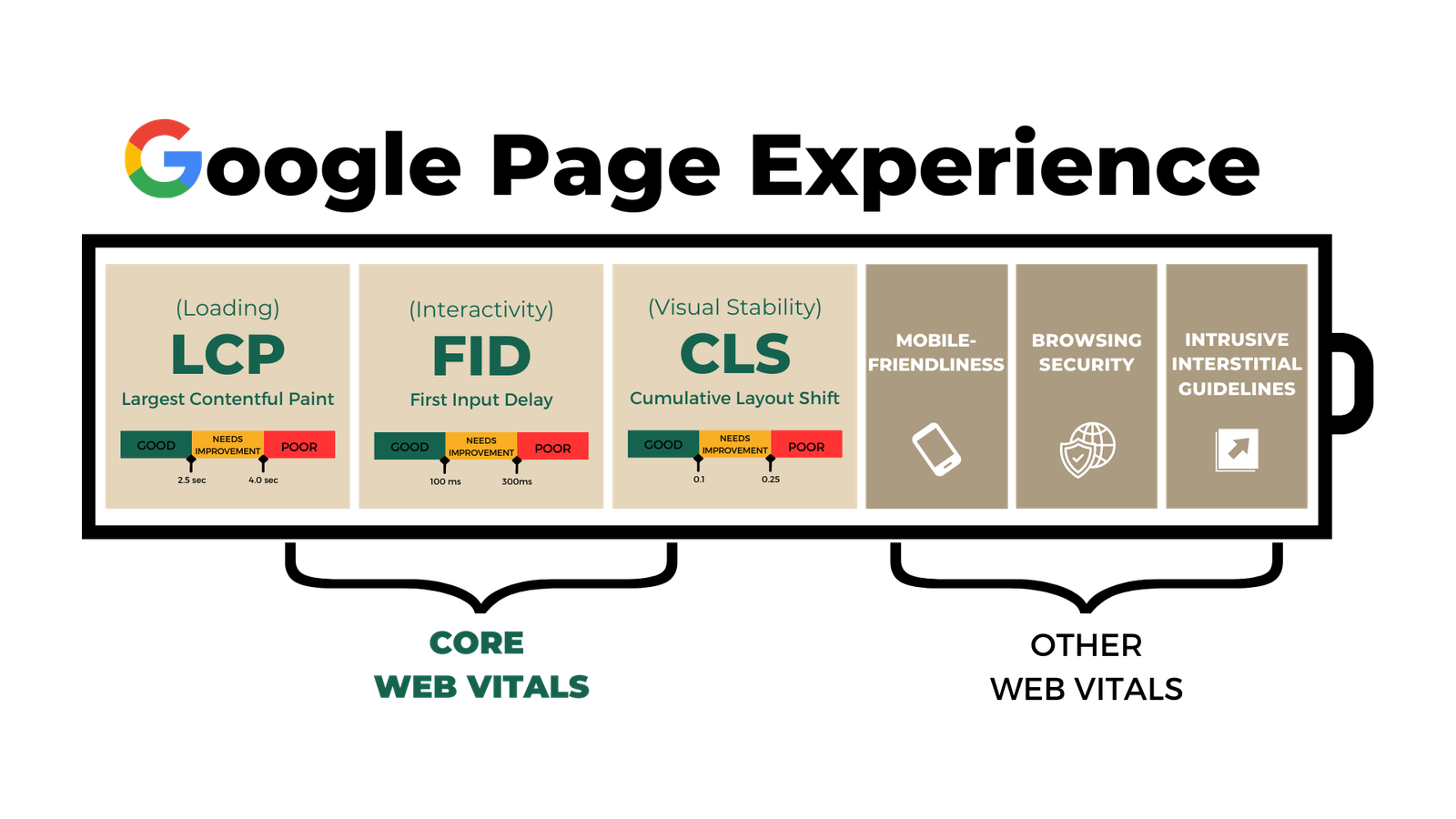In 2022, Google has focused on select metrics that greatly affect search engine visibility. In this article, we are going to break it down so you as a business owner can understand what it means.

“Page Experience” and “Core Web Vitals” are marketing buzzwords that are often used interchangeably, but they refer to two separate sets of website metrics. Page Experience is a set of signals that measure how users perceive the experience of interacting with a web page beyond its pure information value. Core Web Vitals is a subset of page experience, which is a set of metrics that measure real-world user experience for loading performance, interactivity, and visual stability of the page. It also includes existing Search signals: mobile-friendliness, HTTPS, and intrusive interstitial guidelines.
What exactly is Page Experience?
Page experience is about how easy and valuable users experience their time on your website, regardless of whether the website provided the information that they were seeking. The simpler the user experience, the more positive users. Google rewards websites that provide positive overall experiences through measurable KPIs for what a search bot can determine. Google is taking the subjective user experience and putting them into measurable terms that any search bot can understand. Page Experience is composed of:
-
- Core Web Vitals: Measures how fast the critical content on a page loads, how easy a website is to navigate, and how stable the page layout is
- Mobile-Friendly; How the page looks on a mobile device
- Safe-Browsing: A page that doesn’t contain any spyware, malware, and isn’t deceptive
- HTTPS: Warns users when a page is insecure
- Interstitials: Interruption Marketing tactics are detrimental to page experience
Core Web Vitals
Core Web Vitals are a subset of Page Experience and have three main components: largest contentful paint, first input delay, and cumulative layout shift.
-
- Largest Contentful Paint (LCP) is a measurement of how quickly the main elements of your page loads. A rule of thumb is to make sure everything loads within two and a half seconds or less.
Pro tip: LCP load time only includes the time it takes for the largest above-the-fold elements to load. Your total web page can take longer to load.
-
- First input delay (FID) is a measure of how easy it is to navigate a page. How long does a page take to respond to a visitor’s action? To provide a good user experience, pages should have an FID of 100 milliseconds or less.
- Cumulative layout shift (CLS) measures whether or not the page is changing when a user is navigating through, usually as a result of coding issues. To provide a good user experience, pages should maintain a CLS of 0.1. or less.
To measure your Core Web Vitals you can use the Chrome User Experience Report, PageSpeed Insights, and Search Console’s Core Web Vitals report.
Core Web Vitals is important because it makes up a large chunk of the Page Experience score, which is one of the main factors in ranking for the search engine. Average search engine visibility increases by 1% when core web vitals are met, and decreases by 3.7% when none are met, according to a study from SISTRIX. It serves as a differentiator from those with strong content websites to discern who’s delivering the content in the most efficient manner.
If your website performs well in these areas, Google will “reward” your website with stronger visibility and ranking on the search engine. For instance, in our process of updating our website, we are constantly checking mobile page layout and load times in order to optimize our ranking. Need help navigating Page Experience or Core Web Vitals with your company’s website? Book a discovery call with us today.

